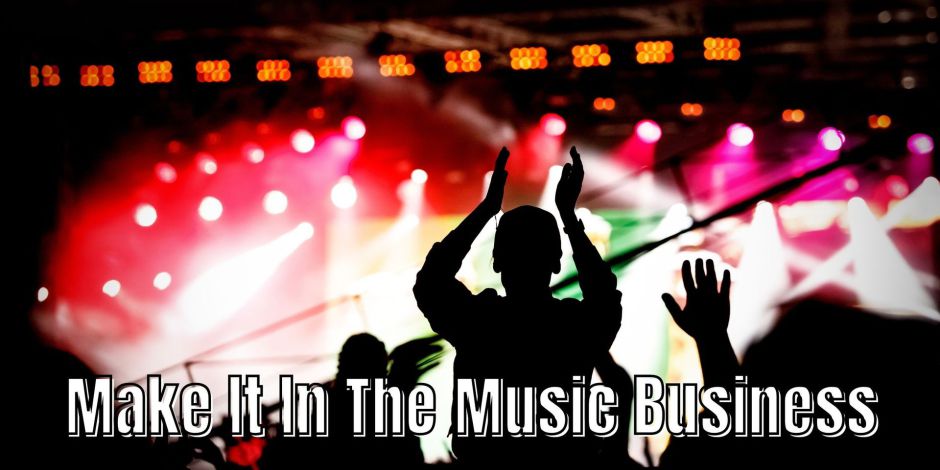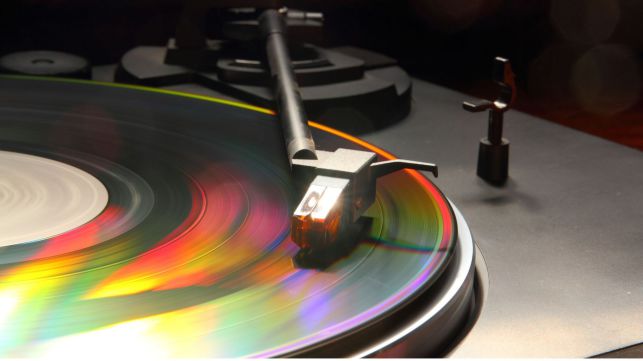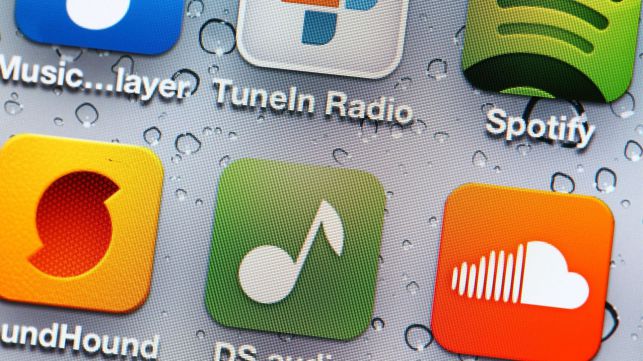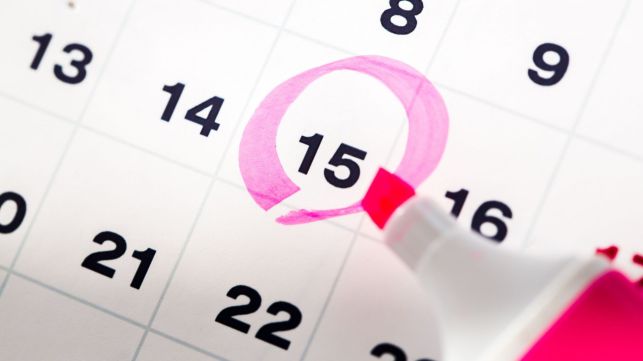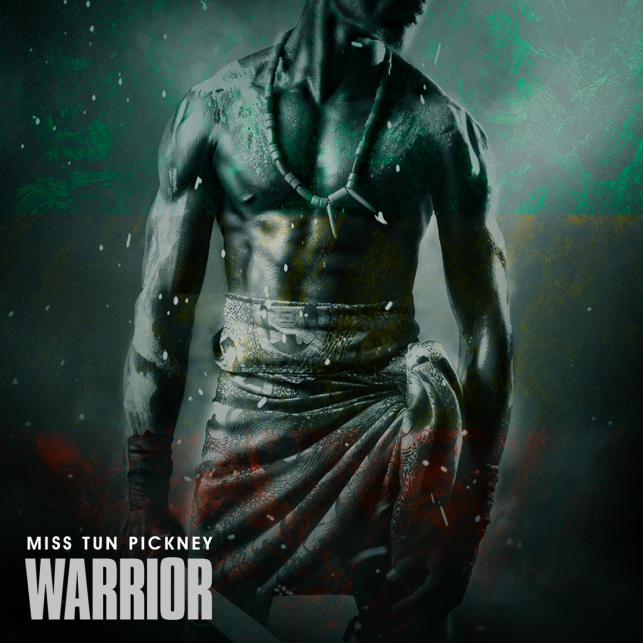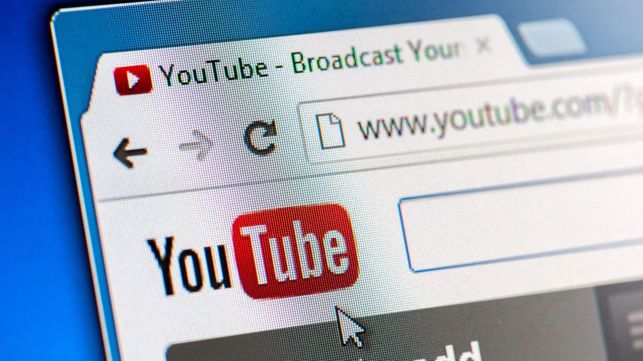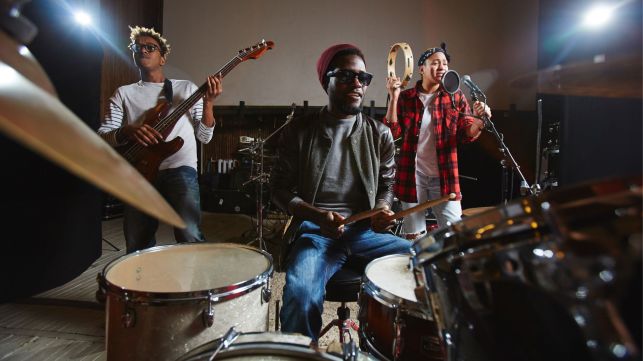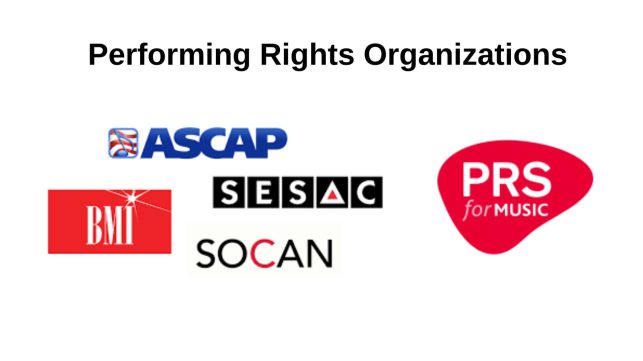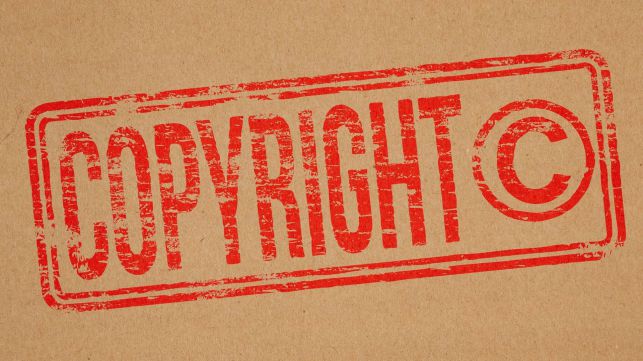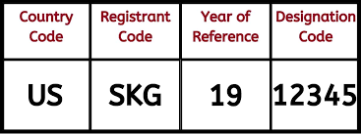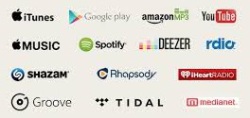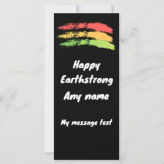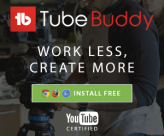How to Release an Album, EP or Single | Releasing Music the Right Way
So, you imagined a concept, then crafted that concept into something worthy of recording. You have spent time, energy and money on turning it into a finished production. The time has come to unleash your creation on the world.
Whether you release an album, EP or single you should feel pride in your achievement and what you want is to give your creation the best possible chance of success.
When releasing music there are certain key tasks to carry out to ensure success isn't hindered by simple mistakes or by not taking opportunities to give your music a flying start.
But the steps you should take are not difficult and if you follow the suggested steps below you will have a successful launch and get your music out there without delays.
How To Release an Album EP or Single
I am assuming that when you release your music one of your distribution methods will be using a digital distribution company.
The requirements of the digital stores are not onerous but, if you make a mistake that you don't notice until after your music is live in the digital stores, it can mean cancelling and starting the release process again. However, let's assume that is not going to happen because before releasing your songs you have diligently referred to this guide.
What is an album? The definition of Single, EP and Album is not consistent across digital stores. So bear this in mind before you complete your EP or album project.
The designation given by your music distributor can be overridden by the digital store. This is done automatically based on how many tracks are on the project, and the total run time. Here are the requirements for two of the leading platforms.
|
Categorization |
Apple Music / iTunes |
Spotify |
|
Single |
The release is one to three (1-3) tracks
The entire release is 30 minutes or less and all individual tracks are less than 10 minutes.
|
The release has three (3) or fewer tracks
The entire release is 30 minutes or less
|
|
EP |
EP's must meet one of the following two requirements:
The release has a total of one to three (1-3) tracks, one or more of the tracks is/are 10 minutes or longer and the entire release is less than 30 minutes.
The release has a total of four to six (4-6) tracks and the entire release is less than 30 minutes. |
Note: EPs show up under the singles section.
The release has four to six (4-6) tracks.
The release is under 30 minutes in duration.
|
|
Album |
The release has seven (7) or more tracks AND/OR
The release is over 30 minutes in duration. |
The release has seven (7) or more tracks AND/OR
The release is over 30 minutes in duration. |
Make Your Music Production Playlist and Radio Friendly
When finalizing your production and musical arrangement bear in mind what you can do to make sure it is suitable for radio and playlist selection.
At the end of the day it is your music but a small change could bring a lot of streams your way. So, here are some of the latest trends.
- Keep Intros short. It is only a click to someone else’s song so get to the heart of your song quickly.
- An alternative to a short intro is putting the hook at the start and so grabbing your listeners early.
- Keeping the song under 3min 15 secs. Every stream is revenue earned so there is now a trend to shorten tracks so that listeners are likely to put it on repeat. Also, radio stations will edit long tracks and this may not be at the point you would prefer.
- The use of expletives can be one of the criteria that some playlists identify to exclude your track. But if this is typical in your genre then you can weigh up the pros and cons.
Prepare For Release
You may have heard the expression ‘Fail to prepare, prepare to fail’. This is certainly true when it comes to releasing music.
So, whether you use a spreadsheet or a note making app, the first thing to do is make a list of the tasks you need to complete and enter an estimated time to complete. This will enable you to sense check your release date.
Determine Your Marketing and Promotion Budget
Getting a release distributed is what every music maker does so this alone is not going to get visibility for your release. Promoting your release is an essential part of your release strategy.
Depending on how you approach it, marketing and promotion will require some funds and you need to determine what your budget will be.
You need to split your budget between pre-release and post-release promotion. Your pre-release activities will be aligned with your release date so take this into account when choosing your release date.
You then need to list and prioritise your marketing options and assign your budgeting accordingly. It may be that certain promotions you wanted to carry out are not feasible within your budget.
Once you know the activities to be undertaken add them to your task list.
Decide on your Release Date
Your release date is the date that will govern the completion of all the tasks you need to undertake. Including, leaving time for creating anticipation around your release. I’ll speak about this later.
Depending on whether you are releasing an album, EP or single, the release date could be a month or nine months away or more. This may sound like a long time but the success of your music will depend on the effort you have put in before the release date.
Before settling on the final release date you must review the date and ensure you can complete all the tasks that you need to undertake by that date.
Once you are comfortable with the date then set that date in stone and commit to achieving all you need to do.
Choose Your Music Distribution Methods
Although, a lot of music is distributed digitally to online digital platforms like Spotify, iTunes and Deezer, there is still the option to sell your music yourself in physical form on your merch table or on your website. You can also make the music exclusively available on vinyl.
So, decide on the purpose of this release, who you are targeting and how you want to distribute your music. Nothing is mutually exclusive. You could for instance have a limited press of vinyls as well as digital distribution or burn some CDs as giveaways.
Your decision on distribution methods will impact the number of tasks you need to carry out.
Create Your Album or Single Cover Art
One of your most important visual elements is your album or single cover. In a world with short attention spans and only a few seconds to capture the attention of potential listeners, your cover art needs your full creative attention.
Your Cover art should capture a key aspect of your music whether it is the concept behind the album, a key line from the song or the album or single title. It should trigger an idea to the viewer.
As well as triggering an idea you also need to get your audience to pay attention and stop scrolling through their feed. So it also has to be eye catching.
Getting the right cover art takes a good amount of creative thinking. You can start off by looking at stock photos using a service like piqsels. This can give you ideas or you may even find that perfect image you are looking for.
You can create an image yourself if you have photo editing skills or use canva.if you find a great image.
If you have a concept that needs more professional expertise then invest in a the services of a graphic designer. This does not have to be expensive and you can find some great talent on Fiverr.
Once you have the photo and image you want to use there are some requirements that need to be met to satisfy the digital stores. If your cover art does not meet the requirements this will delay the release.
Square – your image must be a perfect square.
Format – it must be in JPG or PNG
Pixels – It must be a maximum of 3000 x 3000 pixels. This is best as it is better to resize down than up if this is necessary by the digital stores. Some distribution companies may accept lower pixel density but you need to read their release instructions.
Text Consistency – When you add release data on your music distribution company’s release builder you will have stated the album or single title. Your artwork must be aligned with this. If your title is “Party Night” but your artwork says “Party Time” your release will not go live.
Also, do not include additional text to your release information such as a telephone number or website URL.
No Quality issues – make sure your artwork is not blurry or pixelated
Do Not Include any Marketing – the artwork must not include pricing or stickers e.g. sale, discount etc. Nor should it refer to a physical format like CD or DVD.
It must also not refer to any of the digital stores like iTunes, Spotify or Amazon e.g. Available on Spotify.
Do not include any of your social media links.
No Pornography – it must not be pornographic.
If you follow these guidelines then you should have no trouble with your album or single artwork.
Put A little thought into your Titles
As well as the cover art your title, which is part of the tracks meta data, can also play a part in visibility of your music. Many commentators recommend taking a line from your verse or chorus as the title for songs and there is nothing wrong with this approach.
However, just like artists that do cover versions of well-known songs to drive additional engagement to their own compositions, the same can be done with titles.
If there is some flexibility available in your song title then try to give it the same name as a well-known song. This will help your song to appear in the search suggestions of music platforms and you may get some additional engagement especially if both songs are in the same genre.
Once you have decided on your title(s) then try to commit to maintaining it. Once you start creating some buzz around your release, which you should do in advance of the release, changing titles can be a pain as you may have already referred to it in social media posts, press release, interviews etc.
Explaining that the song or album previously known as X is now Y can be confusing in this media world where there is no time for complexities.
Here are some things to consider when entering your title on the distribution company release builder.
- Enter the track or song title exactly how you want it to appear in the digital stores.
- Check and double-check the spelling. Trying to change titles of tracks after they are live is time-consuming and often not straightforward.
- Don’t include the release format in your title e.g. album, EP, Single etc.
Reach the Right Listeners
Another piece of important meta data is the genre of your album or single. This will need to be entered in the release builder and be used by the digital stores.
Pleasing their listeners by giving them the music they are looking for is a key driver of the digital stores and the genre is an important piece of data in achieving that aim.
As well as the main genres there are also sub-genres and together the options are now in the hundreds. This can seem a bit daunting but choosing the right genre and sub-genre is important if you want to get your music in front of the right audience.
The positive thing about this plethora of genres is that hopefully, it caters for your niche and you can specifically target your audience.
So, for the main the genre be true to the sound that your track represents. Find the genre with the best fit. This not only helps the algorithms that we all have to satisfy but also doesn’t misrepresent your music to prospective listeners who are unlikely to listen to any more of your songs if it is not what they were expecting.
The sub-genre allows you to be more specific. If your music is niche, then at least you can make sure it reaches those that are searching for your niche.
Soundalikes. You are sometimes asked for artists that your music sounds like. I know we don’t really want to admit we sound like anyone else, but entering these details also helps with searches for your music so give this some thought and enter details when you have the option.
Acknowledge Your Collaborators
A song needs input at many stages during its journey from concept to release. Sometimes this process only entails yourself but in many cases you may collaborate.
This may be bringing in a vocalist or getting help with the lyrics or composition. If you are collaborating with someone who has an established following then making sure you acknowledge their input to your song also helps to tap into their fanbase.
Release builders normally have the option to enter more than one primary artist and also featured artists. So ensure that expectations are clarified with your collaborators before release. Like other aspects of meta-data this is difficult to change after release.
So give collaborators their due, you don’t when you may want to collaborate with them again.
Make Sure You Agree Your Royalty Splits
Following on from acknowledging your collaborators, some of you collaborations may not have been on a work for hire basis but entailed an agreed percentage split of royalties.
Make sure that any data entered relating to royalties is in line with any previous agreement. Any divergence will not normally stop your music from being released but, it will cause a flag to be raised if your collaborator has already registered their interest in your song(s).
In this social media world you don’t want your good work and marketing efforts tainted by unwanted revelations.
Register Your Work
Although, there is a great feeling associated with releasing your music you also want some return on the substantial investment of time, energy and money you have put in to getting to this stage.
You want your music to work for you from day one, so make sure you register your work with a performing rights organization (PRO). These organizations will collect royalties on your behalf according to the splits registered.
Your distribution company is also likely to offer other services where royalties are collected from YouTube and Facebook. They may also offer sync licensing where you music is put forward for films, TV and videos.
This is normally optional and you can opt-in after release if you decide you want to take up one or more of these services.
Respect Copyright Law
As a music maker, you know a lot of effort goes into creating a piece of work. So the rights holders should rightfully benefit from their endeavours and copyright law is there to try to ensure this happens.
Therefore, if as part of your production, you have used copyrighted material without the rights holders permission, your release is now illegal. It doesn’t matter whether it is a small excerpt there is no minimum length that is not covered by copyright law contrary to common belief.
You may be tempting to think that the rights holder is not able to monitor the use of their content but many platforms are using copyrighted content software (YouTube for example). So it is likely that at some point your work will be flagged as containing copyrighted content.
If your music takes off, be sure that the rights holders are going to want their dues and this could result in your music being taken down.
So if you use samples of any kind, excluding royalty-free samples, then make sure you have the appropriate licenses.
You Need An ISRC
The ISRC (International Standard Recording Code) is the international identification system for sound recordings.
Each ISRC is a unique and permanent identifier for a specific recording. It identifies that sound recording as yours. Remember a song can have more than one sound recording and each would have its own ISRC.
The ISRC is also independent of the format on which it appears e.g. CD, a digital audio file, etc. And is also independent of the rights holders. For example the rights to the masters could have been held by a record label but when these rights revert to you the ISRC code previously issued would still be valid.
ISRCs are used by digital platforms and PROs to automatically identify recordings for royalty payments.
During your release build, you will be asked to enter an ISRC code. These can be obtained separately, so if you want to obtain them yourself you can. Otherwise, your music distributer will create ISRCs for you but may also charge a fee.
Check Your Audio File Format
MP3 is ok for many purposes, for example, radio spins and uploads to Soundcloud. However, most of the major music distributors do not accept or do not recommend using this format as many digital stores do not accept MP3 audio files.
The standard for most of the major digital stores is 44.1kHz 16bit WAV. Using this will ensure you don’t have any issues and is a higher quality audio file.
Where Does Your Music Go
When you are building your release your music distributor will give you the option to decide which digital stores you want your track to be distributed to.
Many stores cover certain markets and are not worldwide. Spotify, for instance, is not available in every country. So selecting a wide range of stores gives you the chance of more coverage.
You can do an internet search of stores and what countries they cover to determine where your music will be available.
Remember to use any analytics available to you, such as Spotify for Artists, to check on where your music is being streamed once it is released. This can help with targeting promotions as you may be surprised who loves your music.
Ready To Go
The points up to now will ensure a smooth build of your release. However, that is just part of your release strategy.
Your task list should also include promotion related activities in advance of the release date.
You want your music to get off to a flying start and many algorithms take note of the early performance of your track.
If your track seems to have a lot of early engagement it will appear on the feeds of more listeners, so pre-release promotion is important in this regard. The following are some suggestions.
Update Your Electronic Press Kit (EPK)
As part of the build-up to your release, you want to be prepared and have updated your press kit to include details around the upcoming release. This may include the concept behind the song or album, lyrics, tracklists etc.
You don’t know where the next interview opportunity may come from so be prepared.
Pre-Saves and Playlist Submissions
Create Pre-save campaigns, for example on Spotify. This will allow your audience to take action off the back of your promotion campaigns and will give your track a favourable early boost.
Also, consider submitting your track for Spotify playlist consideration. This needs to be done at least seven days before the release date. But it is a good idea to allow more time considering the number of submissions they receive.
And Finally
Releasing a track should generate excitement and anticipation. If you are not feeling this then it is unlikely you are going to get your audience to feel the same way.
With the steps in this guide, you will not only reduce the likelihood of any issues when building your release but will also generate a buzz and anticipation around your release.
Keep this buzz going after your release for as long as you can and hopefully, your listeners will also spread the word.
Your creation is out there and it wouldn’t have existed without you. That’s something to be proud of.
